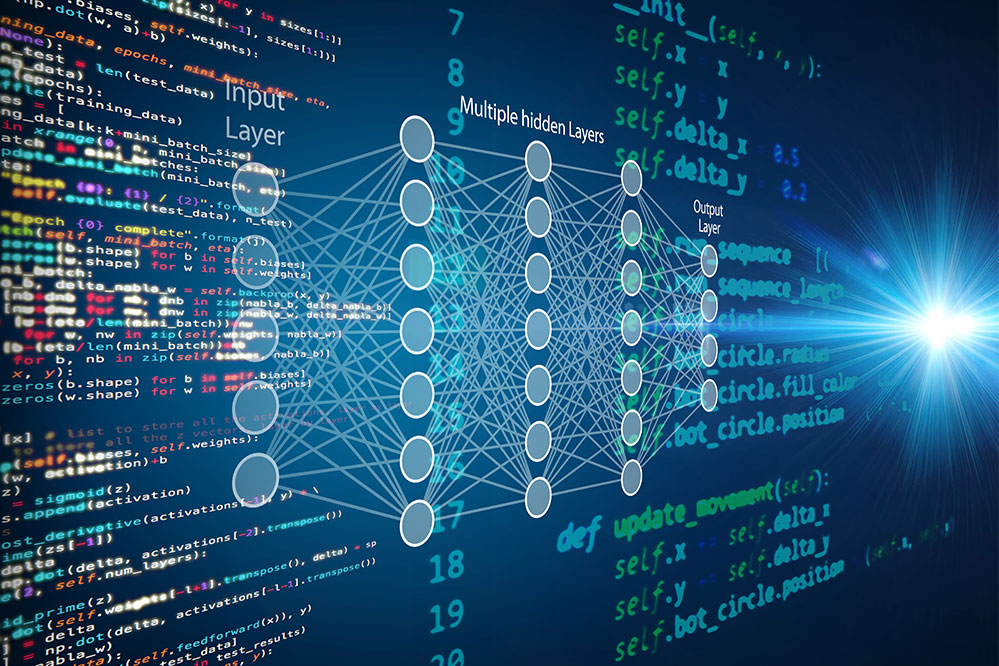Coordinating Complicated Systems with Simple Diagrams
Researchers at MIT have developed a new way of approaching complex problems in software design, using simple diagrams to reveal better approaches to software optimization in deep-learning models. This new method makes addressing these complex tasks so simple that it can be reduced to a drawing that would fit on the back of a napkin.
The Problem of Complex Systems
Coordinating complicated interactive systems, whether it’s the different modes of transportation in a city or the various components that must work together to make an effective and efficient robot, is an increasingly important subject for software designers to tackle. The components are different pieces of an algorithm, and they have to talk to each other, exchange information, but also account for energy usage, memory consumption, and so on. Such optimizations are notoriously difficult because each change in one part of the system can in turn cause changes in other parts, which can further affect other parts, and so on.
A New Approach to Deep Learning
The researchers decided to focus on the particular class of deep-learning algorithms, which are currently a hot topic of research. Deep learning is the basis of the large artificial intelligence models, including large language models such as ChatGPT and image-generation models such as Midjourney. These models manipulate data by a “deep” series of matrix multiplications interspersed with other operations. The numbers within matrices are parameters, and are updated during long training runs, allowing for complex patterns to be found. Models consist of billions of parameters, making computation expensive, and hence improved resource usage and optimization invaluable.
Diagrams as a Tool for Optimization
Diagrams can represent details of the parallelized operations that deep-learning models consist of, revealing the relationships between algorithms and the parallelized graphics processing unit (GPU) hardware they run on, supplied by companies such as NVIDIA. The researchers designed a new language to talk about these new systems, which is heavily based on something called category theory. This new diagram-based “language” allows for a clear visual understanding of the way parallel real-world processes can be represented by parallel processing in multicore computer GPUs.
The Power of Category Theory
Category theory, which underlies this approach, is a way of mathematically describing the different components of a system and how they interact in a generalized, abstract manner. Different perspectives can be related, such as mathematical formulas can be related to algorithms that implement them and use resources. The researchers developed a new framework that incorporates many more graphical conventions and many more properties, which they call “string diagrams on steroids.” This allows for a systematic approach to optimizing deep-learning algorithms, which is a critically unaddressed problem in the field.
Applications and Future Directions
The researchers applied their method to the well-established FlashAttention algorithm, and were able to derive it literally on a napkin. They hope to now use this language to automate the detection of improvements, and ultimately develop software that can automatically optimize deep-learning algorithms. This line of work integrates with the focus on categorical co-design, which uses the tools of category theory to simultaneously optimize various components of engineered systems.
Conclusion
The new diagram-based language developed by the researchers at MIT has the potential to revolutionize the field of deep learning by providing a systematic approach to optimizing complex algorithms. This approach can simplify the process of optimizing deep-learning models, making it possible to derive improvements quickly and efficiently. As the field of deep learning continues to evolve, this new language has the potential to play a major role in shaping its future.
FAQs
- What is the main problem that the researchers are trying to solve?
The researchers are trying to solve the problem of optimizing complex deep-learning algorithms, which is a critically unaddressed problem in the field. - What is the new approach that the researchers have developed?
The researchers have developed a new diagram-based language that uses category theory to mathematically describe the different components of a system and how they interact. - What are the potential applications of this new approach?
The potential applications of this new approach include automating the detection of improvements in deep-learning algorithms, and developing software that can automatically optimize these algorithms. - What is category theory and how is it used in this approach?
Category theory is a way of mathematically describing the different components of a system and how they interact in a generalized, abstract manner. It is used in this approach to provide a systematic way of optimizing deep-learning algorithms. - What is the future direction of this research?
The future direction of this research includes developing software that can automatically optimize deep-learning algorithms, and integrating this approach with other areas of research, such as categorical co-design.











